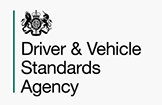EU Mobility Package; Key changes from 20 August 2020

Introduction
On 31 July 2020, the legislative texts of the European Union’s Mobility Package 1 (that’s the Road Transport Directive (Working Time) regulations), were published in the European Commission (Full details of the acts are in annex A).
In summary:
• The majority of the new rules governing driving and rest time become applicable on 20 August 2020, with the exception of the rules governing smart tachograph version 2 which come later.
• The new rules governing freight transport market access and access to the profession are applicable as from 21 February 2022. (After the UK leaves the EU).
• The rules governing posting and enforcement become applicable as of 2 February 2022. (This may impact UK operators, that will depend on any future agreement the UK makes with the EU).
Actions is some areas, especially around enforcement still need addressing. Further guidance will be provided when it becomes available.
The focus of this paper is the changes being made in 2020 only. Further guidance will be provided when the UK relationship with the EU after 1 January 2021 is known.
Driving, rest time rules and tachographs for HGV’s
The new EU Regulation (EU) 2020/1054, amends Regulation (EC) No 561/2006 governing driving and rest time rules and Regulation (EU) No 165/2014 governing tachographs.
These Regulations apply directly to the UK and are now part of UK law from 20 August. They provide common rules for EU road transport operators concerning maximum daily and fortnightly driving times, as well as daily and weekly minimum rest periods for all drivers of road haulage (subject to specified exceptions and national derogations).
The Regulations cover national and international road haulage operations (and passenger transport) in freight vehicles over 3.5tonnes maximum permissible mass, long and short distance, drivers for own account and for hire and reward, employees and self-employed.
The main changes are as follows:
a) Organisation of weekly rest – what is allowed?
According to Article 8(6), a driver engaged in the international transport of goods may, outside the Member State of establishment, “take two consecutive reduced weekly rest periods provided that the driver in any four consecutive weeks takes at least four weekly rest periods, of which at least two shall be regular weekly rest periods”.
When using the derogation, the next weekly rest period must be preceded by a rest period taken in compensation for the two reduced weekly rest periods taken in a row.
b) Return “home” of drivers within each four-week period
Operators are required to organise the work of drivers so that periods away from home are not excessively long and that drivers can benefit from long rest periods taken in compensation for reduced weekly rest periods.
In each four-week period the return should allow the driver to reach an operational centre of the haulier in its Member State of establishment or the driver’s place of residence (the drivers are free to choose where to spend their rest period if they wish to use an alternative to the drivers normal place of residence, we advise operators to document the drivers request if this happens).
To demonstrate that the operator fulfils its obligations regarding the organisation of the regular return, the operator can use tachograph records, duty rosters of the drivers or other documentation to provide proof. Such evidence should be available at the operator’s premises to be presented if requested by control authorities.
c) Ban on driver take their regular weekly rest in the vehicle cab
It is forbidden for a driver to take regular weekly rest of 45 hours or more in the vehicle. Drivers must take their rest (if not on their company’s premises or at their place of residence) in suitable, gender-friendly accommodation with adequate sleeping and sanitary facilities. The associated costs away from home must be borne by the employer.
Note: Several countries already enforce this legislation.
d) Keeping records on board for 56 days
From 31 December 2024 the record keeping reference period will be increased from 28 to 56 days. Until that date, the reference period shall remain 28 days.
e) The use of smart tachographs
There dates related to the introduction of smart tachograph version 2 are not yet set by the European Commission.
f) Flexibility under Article 12 of Regulation 561/2006
Provided that road safety is not jeopardised and in exceptional circumstances, the driver has the right to either:
• Exceed the daily and weekly driving time by up to one hour to reach the employer’s operational centre or the driver’s place of residence for taking a weekly rest; or
• Exceed the daily and weekly driving time by up to two hours, provided that an uninterrupted break of 30 minutes be taken immediately prior to the additional driving, to reach the employer’s operational centre or the driver’s place of residence for taking a regular weekly rest.
The driver must make a manually record on the record sheet or print out from the recording instrument explaining the reason why it was necessary to extend the driving period.
The extension must be compensated en bloc with any rest period within three weeks.
The current flexibility within Article 12 that allows drivers to derogate from Articles 6 to 9 in order to reach a suitable stopping place is maintained. The new Article 12 extends this flexibility for drivers returning back to take a weekly rest.
g) Smart tachographs – Inclusion of goods vehicles between 2.5 & 3.5 tonnes engaged in international hire and reward transport – Regulation 165/2014 Art 9 (2)
This is not expected until July 2026, it will be influenced by the date of adoption for the technical specification for Smart tachographs.
Annex
EU Legislative Acts
On 31 July 2020, the legislative texts of the European Union’s Mobility Package 1 were published in the EU’s Official Journal, L 249.
The Mobility Package consists of three main legislative acts:
• Regulation (EU) 2020/1054, amending Regulation (EC) No 561/2006 governing driving and rest time rules and Regulation (EU) No 165/2014 governing tachographs;
• Regulation (EU) 2020/1055, amending Regulations (EC) No 1071/2009 governing access to the profession and Regulation (EC) No 1072/2009 governing freight and passenger transport market access, as well as Regulation (EU) No 1024/2012, and;
• Directive (EU) 2020/1057, which lays down specific rules with respect to Directive 96/71/EC and Directive 2014/67/EU governing the posting of drivers in the Road and Passenger Transport sectors and amending Directive 2006/22/EC as regards enforcement requirements and Regulation (EU) No 1024/2012.





